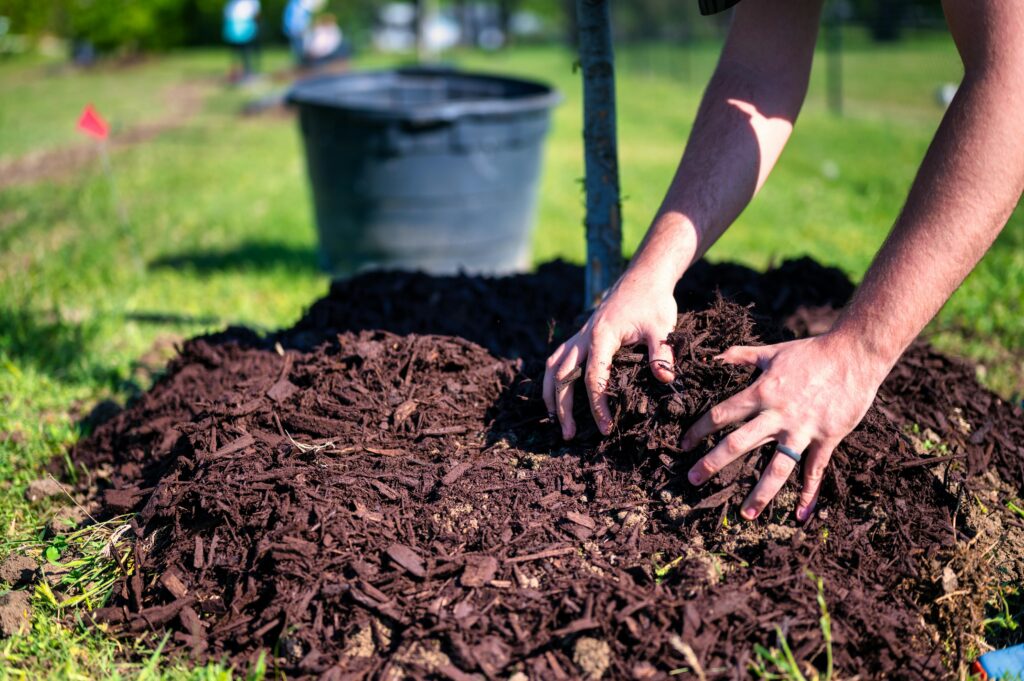
A well-maintained garden with landscaping enhances the beauty of your home and creates a peaceful environment. Proper garden care requires a combination of planning, design, and regular upkeep. Whether you are starting from scratch or maintaining an existing garden with landscaping, understanding the best techniques for plant health, soil care, irrigation, and seasonal maintenance is essential.
This comprehensive guide will provide expert tips on how to design and maintain a garden with landscaping, ensuring it remains lush, vibrant, and functional throughout the year.
The Importance of Landscaping in Garden Care
A thoughtfully designed garden with landscaping not only improves aesthetic appeal but also contributes to environmental health. Landscaping helps with water conservation, improves air quality, and increases biodiversity. Here are some key benefits of incorporating landscaping into your garden care routine:
- Enhances curb appeal and property value
- Creates functional outdoor spaces for relaxation and entertainment
- Reduces soil erosion and promotes water retention
- Supports local wildlife and pollinators
- Improves mental well-being by offering a natural retreat
Step 1: Planning Your Garden with Landscaping
Before implementing any maintenance routine, you must establish a well-structured garden with landscaping plan. Here are the fundamental aspects to consider:
1. Define Your Garden’s Purpose
Decide what you want from your garden with landscaping. Are you looking for a tranquil retreat, a space for growing food, or an entertainment area? Defining its purpose helps guide design and plant selection.
2. Choose a Landscaping Style
There are several landscaping styles to choose from, including:
- Formal Gardens: Symmetrical layouts, trimmed hedges, and structured pathways.
- Informal Gardens: Naturalistic plant arrangements and curving pathways.
- Tropical Gardens: Lush greenery, vibrant flowers, and water features.
- Zen Gardens: Minimalist, featuring rocks, sand, and carefully placed plants.
- Sustainable Gardens: Native plants and eco-friendly designs that require less maintenance.
3. Select the Right Plants
Choosing the right plants is crucial for a thriving garden with landscaping. Consider factors such as climate, soil type, and sunlight availability. Native plants are ideal as they require less maintenance and adapt well to local conditions.
4. Incorporate Hardscaping Elements
Landscaping includes not just plants but also hardscape features like patios, walkways, garden beds, and water features. These elements enhance functionality and improve the garden’s visual appeal.
Step 2: Essential Maintenance for a Healthy Garden
Maintaining a garden with landscaping requires consistency. Here are the key components of effective garden maintenance:
1. Soil Care and Fertilization
Healthy soil is the foundation of a thriving garden. Follow these soil maintenance tips:
- Test soil pH and nutrient levels regularly.
- Add compost and organic matter to enrich soil fertility.
- Use natural fertilizers like compost tea, bone meal, or fish emulsion.
- Rotate plants seasonally to prevent soil depletion.
2. Proper Watering Techniques
Efficient irrigation is vital for plant health. Overwatering can lead to root rot, while underwatering causes stress. Here’s how to manage watering:
- Use a drip irrigation system to provide slow, deep watering.
- Water early in the morning or late in the evening to minimize evaporation.
- Install rain barrels to collect rainwater for sustainable irrigation.
3. Pruning and Trimming
Regular pruning promotes plant health and maintains the structure of your garden with landscaping. Follow these tips:
- Remove dead or diseased branches to encourage new growth.
- Prune shrubs and hedges to maintain their shape.
- Cut back perennials after blooming to enhance future growth.
4. Mulching for Plant Protection
Mulch acts as a protective layer that retains moisture, suppresses weeds, and regulates soil temperature. Choose organic mulches like wood chips, straw, or shredded leaves.
Step 3: Seasonal Garden Maintenance
Your garden with landscaping requires different care depending on the season. Here’s a breakdown of seasonal maintenance tasks:
Spring Maintenance
- Clean up debris and fallen leaves from winter.
- Start planting seasonal flowers and vegetables.
- Apply compost and fertilizers to enrich the soil.
- Check irrigation systems and repair any leaks.
Summer Maintenance
- Increase watering during hot days but avoid waterlogging.
- Prune fast-growing plants and deadhead flowers.
- Monitor for pests and diseases, using organic solutions for control.
- Apply a fresh layer of mulch to retain moisture.
Autumn Maintenance
- Rake fallen leaves and add them to compost piles.
- Plant bulbs for spring bloom.
- Cut back perennials and prepare the garden for winter dormancy.
- Reduce watering as temperatures drop.
Winter Maintenance
- Protect sensitive plants with burlap wraps or cloches.
- Remove heavy snow from tree branches to prevent breakage.
- Prune deciduous trees while they are dormant.
- Plan next year’s landscaping improvements.

Step 4: Sustainable Gardening Practices
A truly successful garden with landscaping embraces sustainability. Here’s how you can maintain an eco-friendly garden:
1. Use Organic Pest Control
Avoid chemical pesticides that harm beneficial insects. Instead, use:
- Companion planting to deter pests naturally.
- Homemade sprays like neem oil or garlic solution.
- Natural predators like ladybugs and praying mantises.
2. Reduce Water Waste
- Install drip irrigation and rainwater collection systems.
- Choose drought-resistant plants to minimize water consumption.
- Group plants with similar water needs together.
3. Compost and Recycle
Create a composting system for kitchen scraps and garden waste to improve soil health and reduce waste.
Step 5: Enhancing Garden Aesthetics
Beyond functionality, a well-designed garden with landscaping should also be visually appealing. Consider these enhancements:
1. Add Lighting
Strategic lighting highlights features and extends the usability of your garden in the evenings. Solar-powered lights are a great eco-friendly option.
2. Create Relaxation Spaces
Incorporate seating areas like benches, hammocks, or pergolas to enjoy the beauty of your garden.
3. Introduce Water Features
Fountains, ponds, or waterfalls create a tranquil ambiance and attract wildlife like birds and butterflies.
Conclusion
A well-maintained garden with landscaping enhances your home’s beauty, provides a relaxing outdoor space, and contributes to a healthier environment. By following essential maintenance routines, incorporating sustainable practices, and continuously improving your garden design, you can enjoy a flourishing green space all year round.
By integrating these expert tips into your routine, your garden with landscaping will not only survive but thrive, becoming a haven of tranquility and beauty. Start planning today and create the garden of your dreams!

One thought on “Landscaping: How to Care for Your Garden with Proper Maintenance”